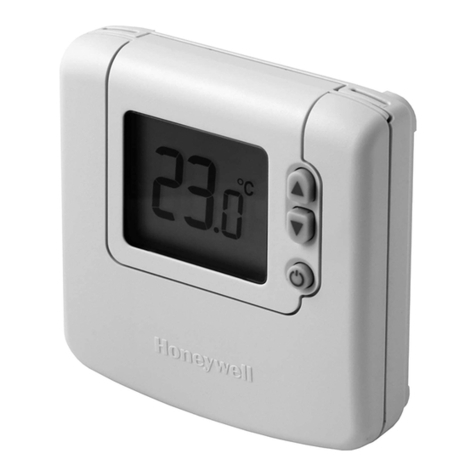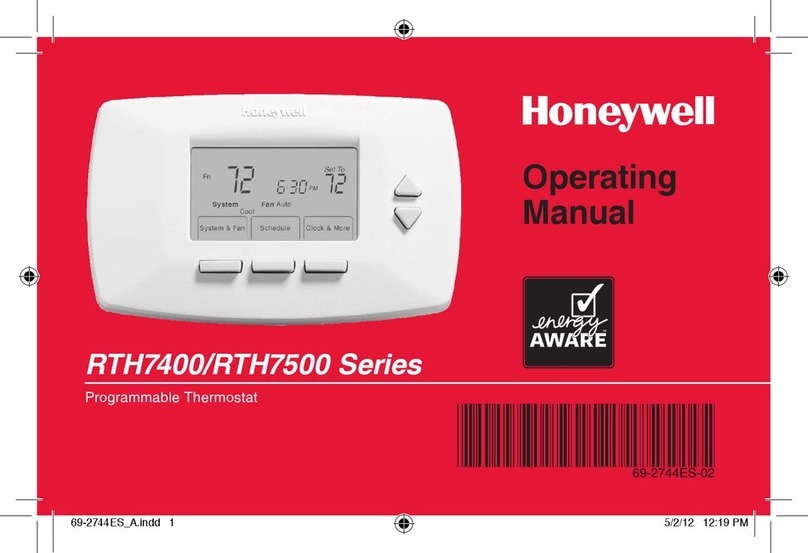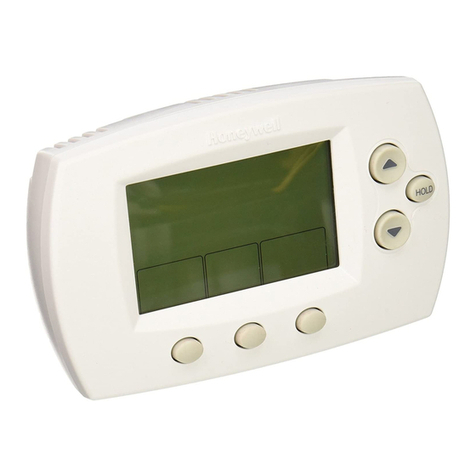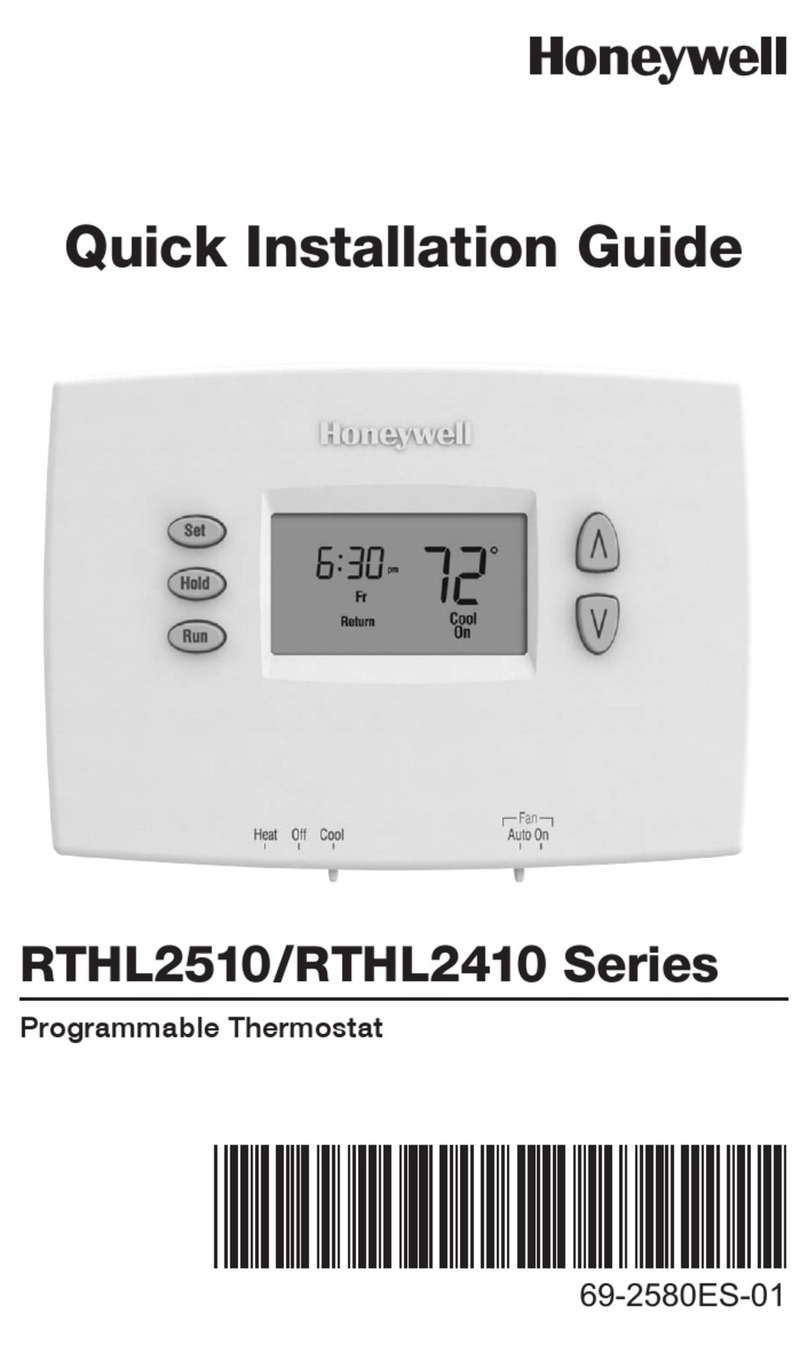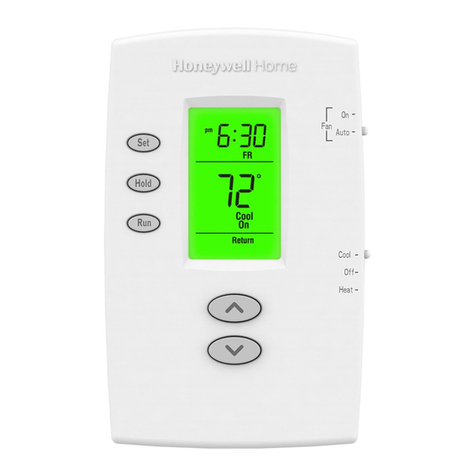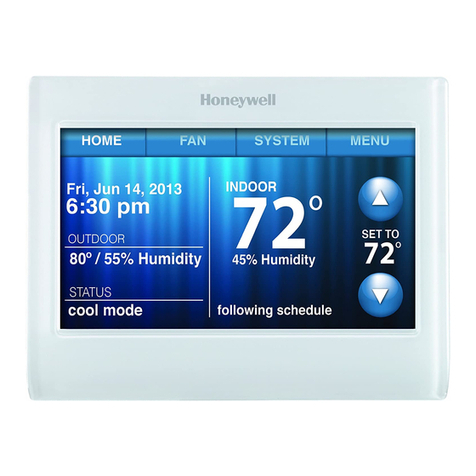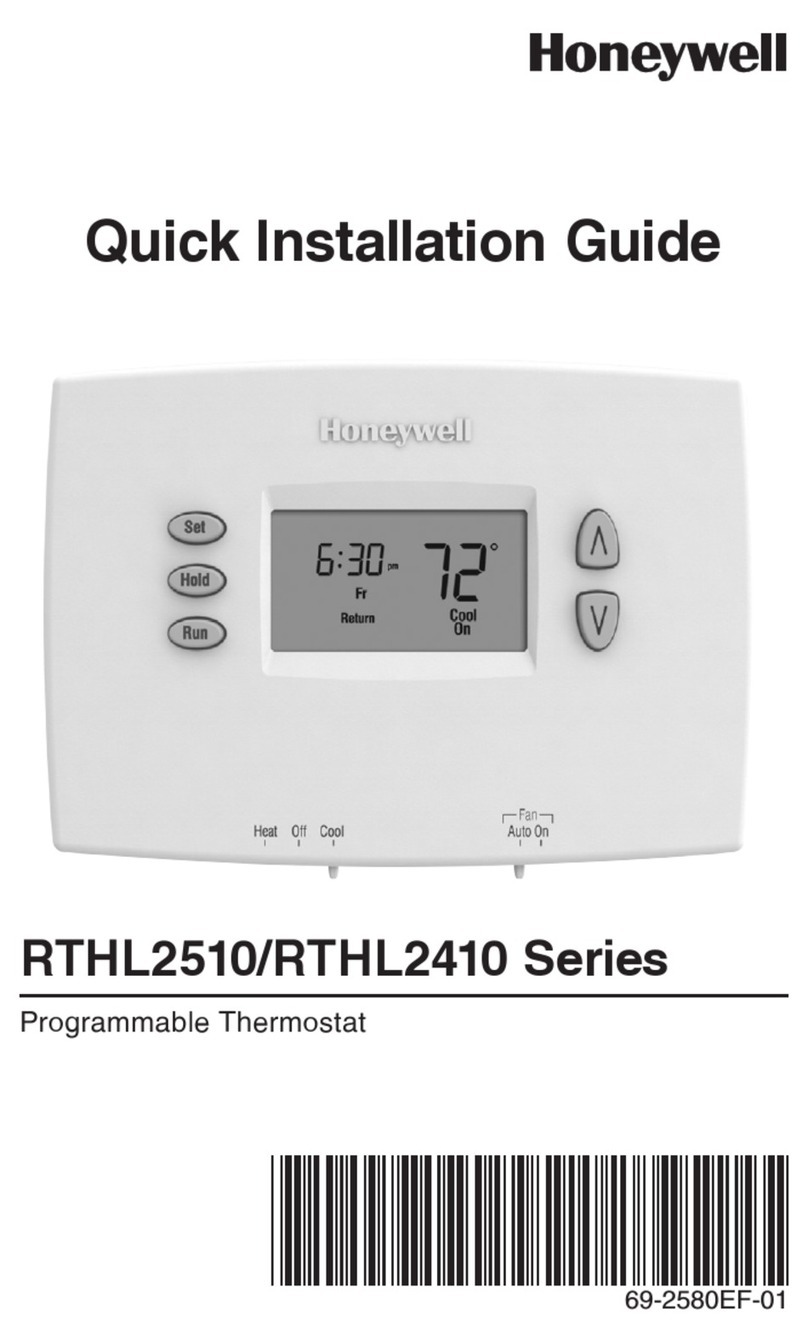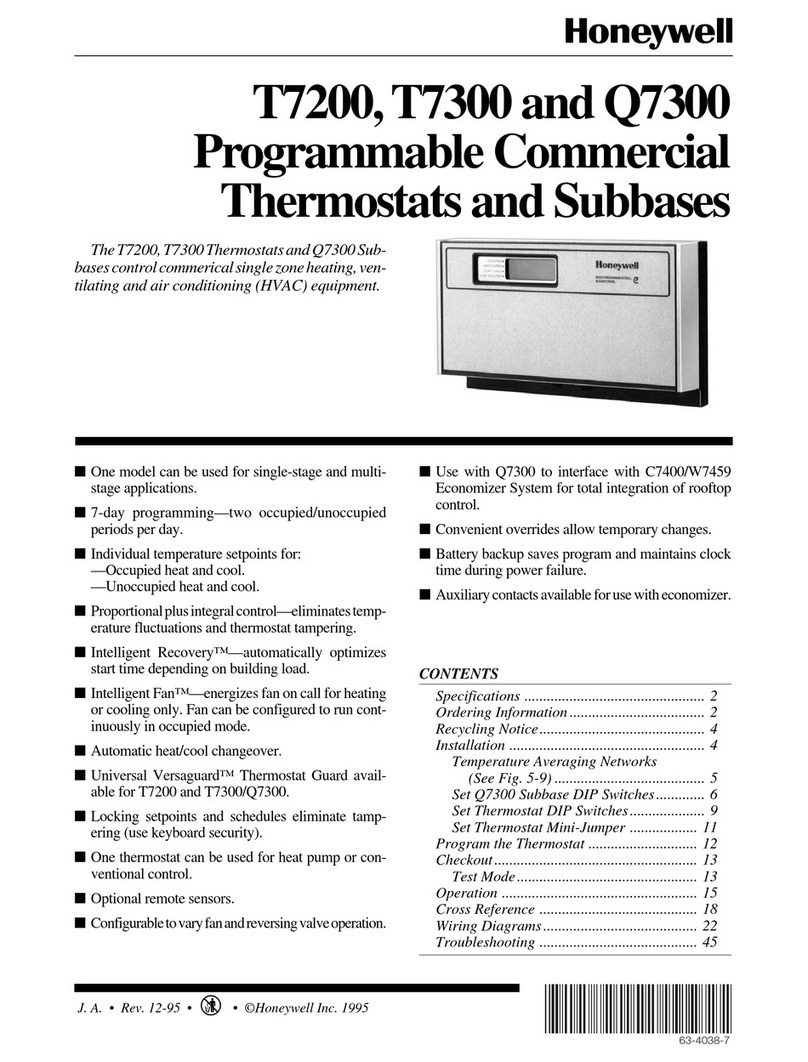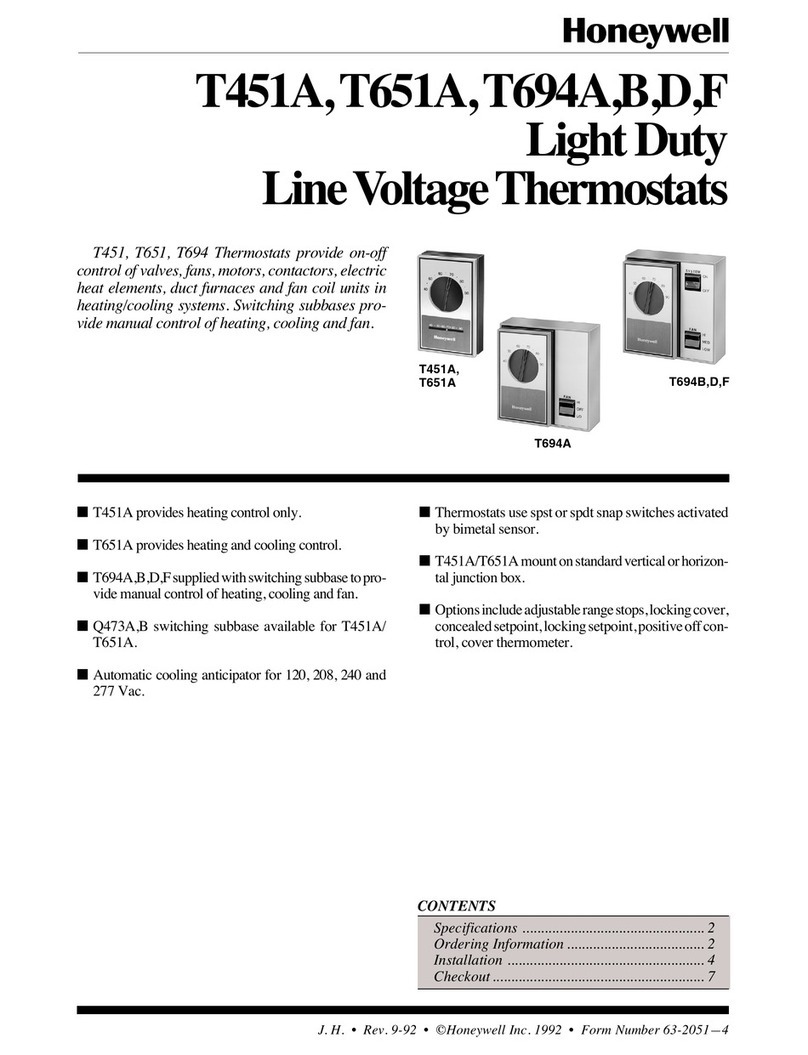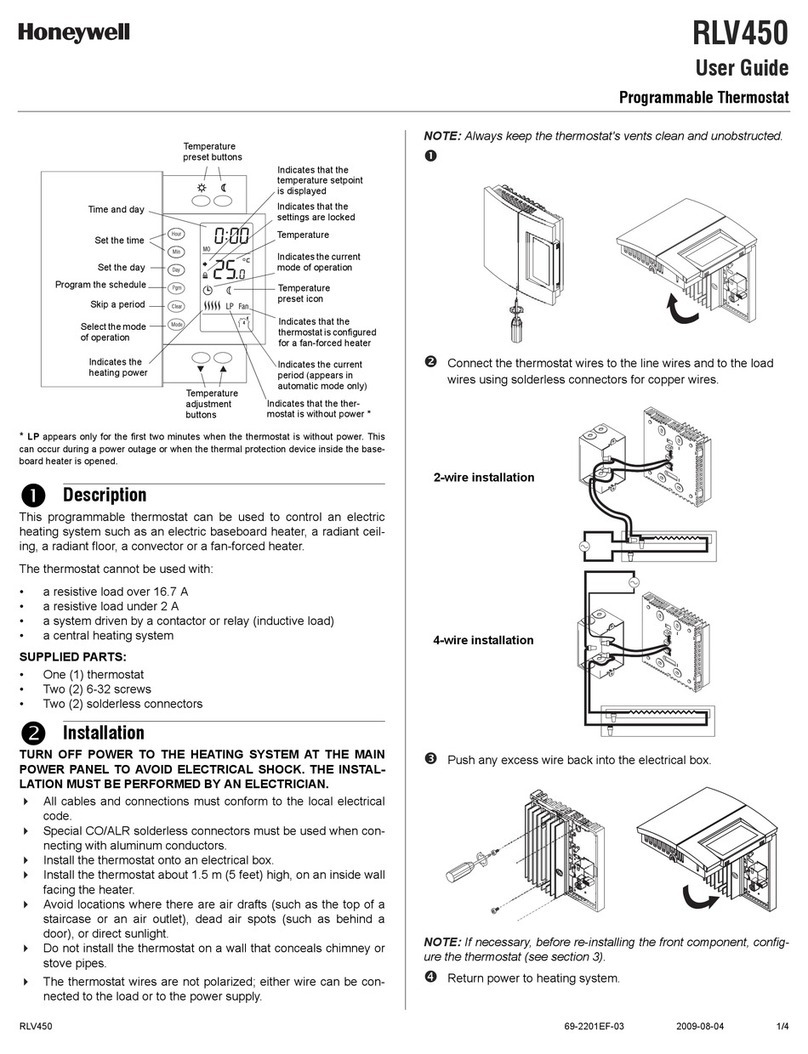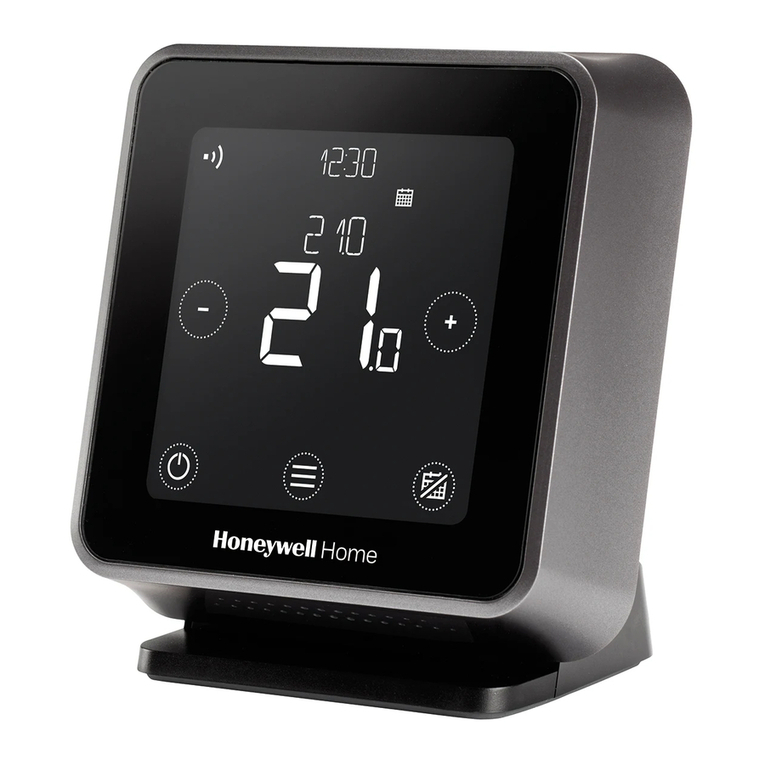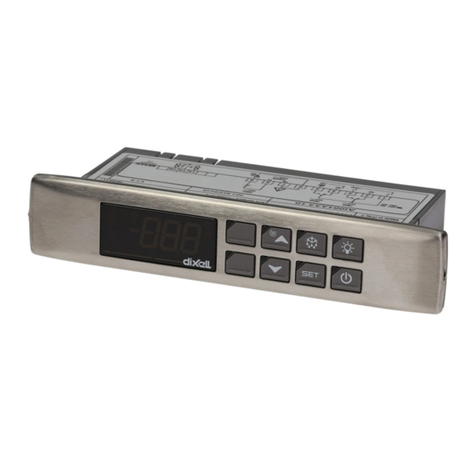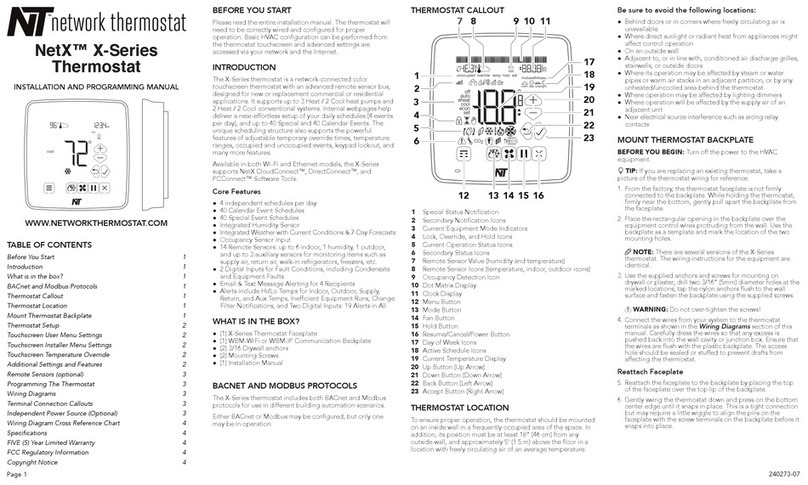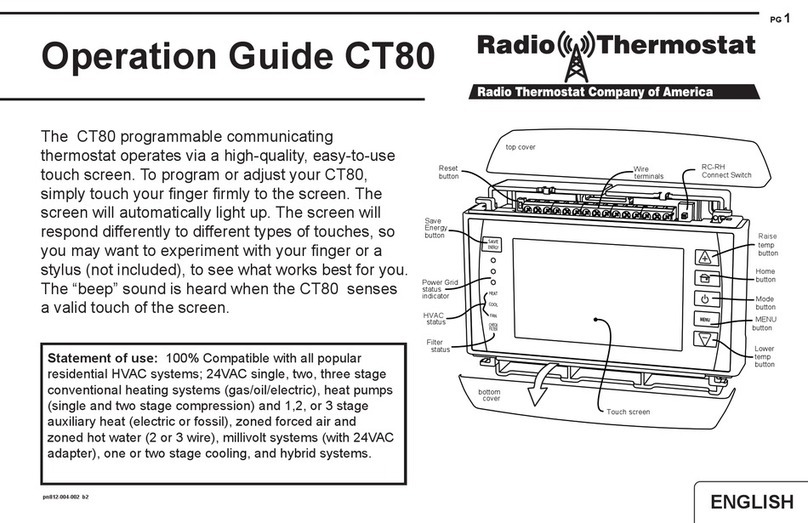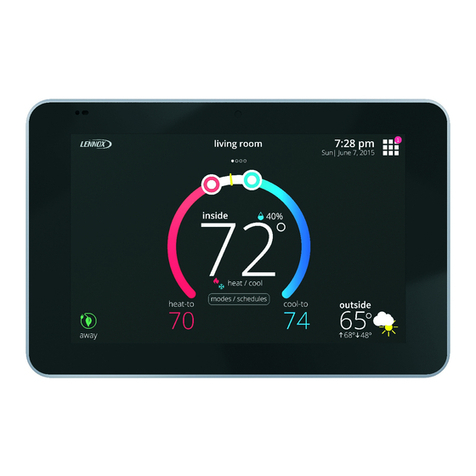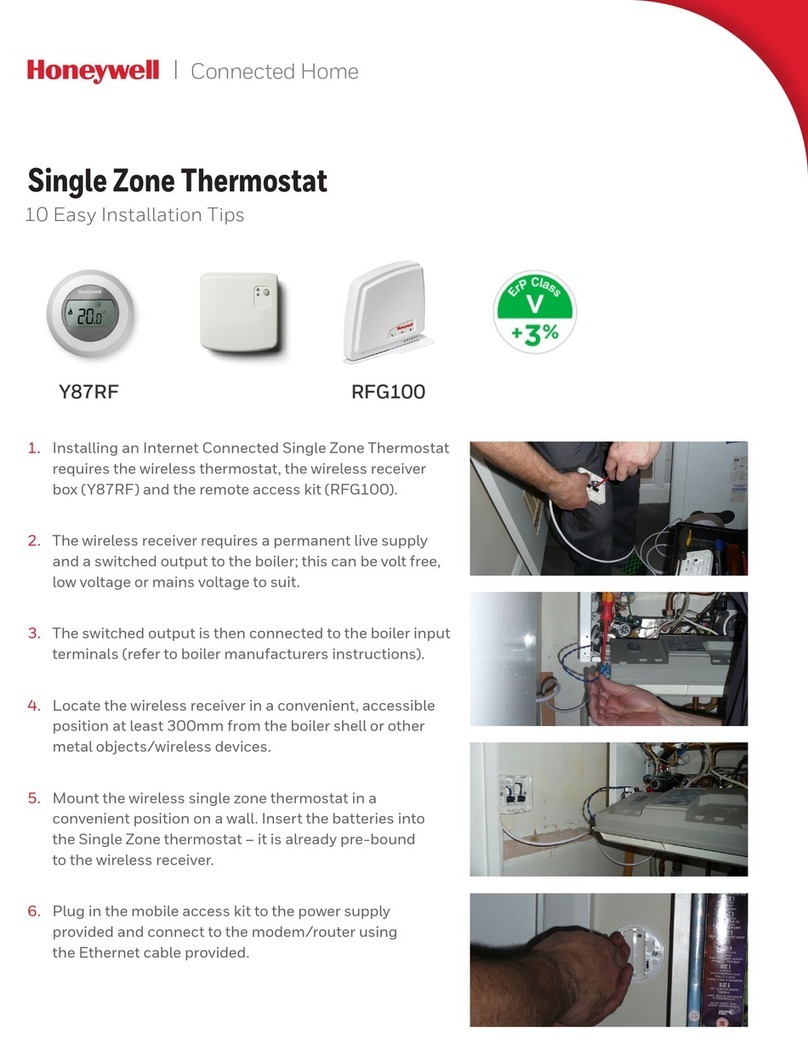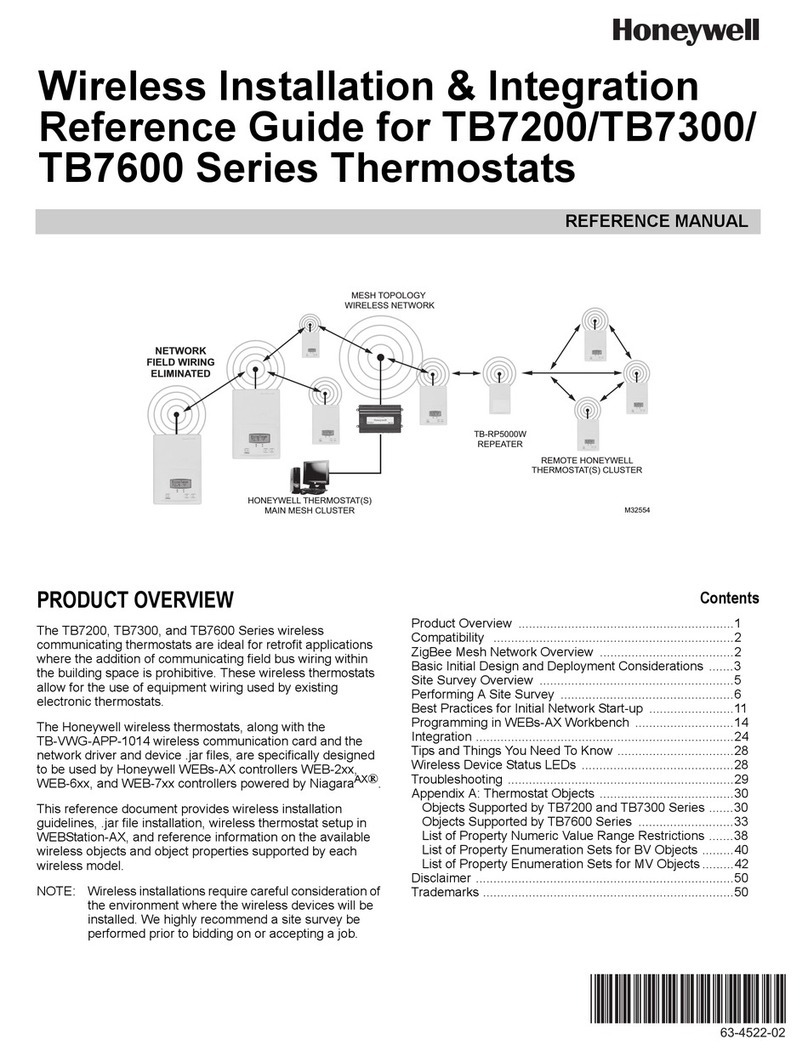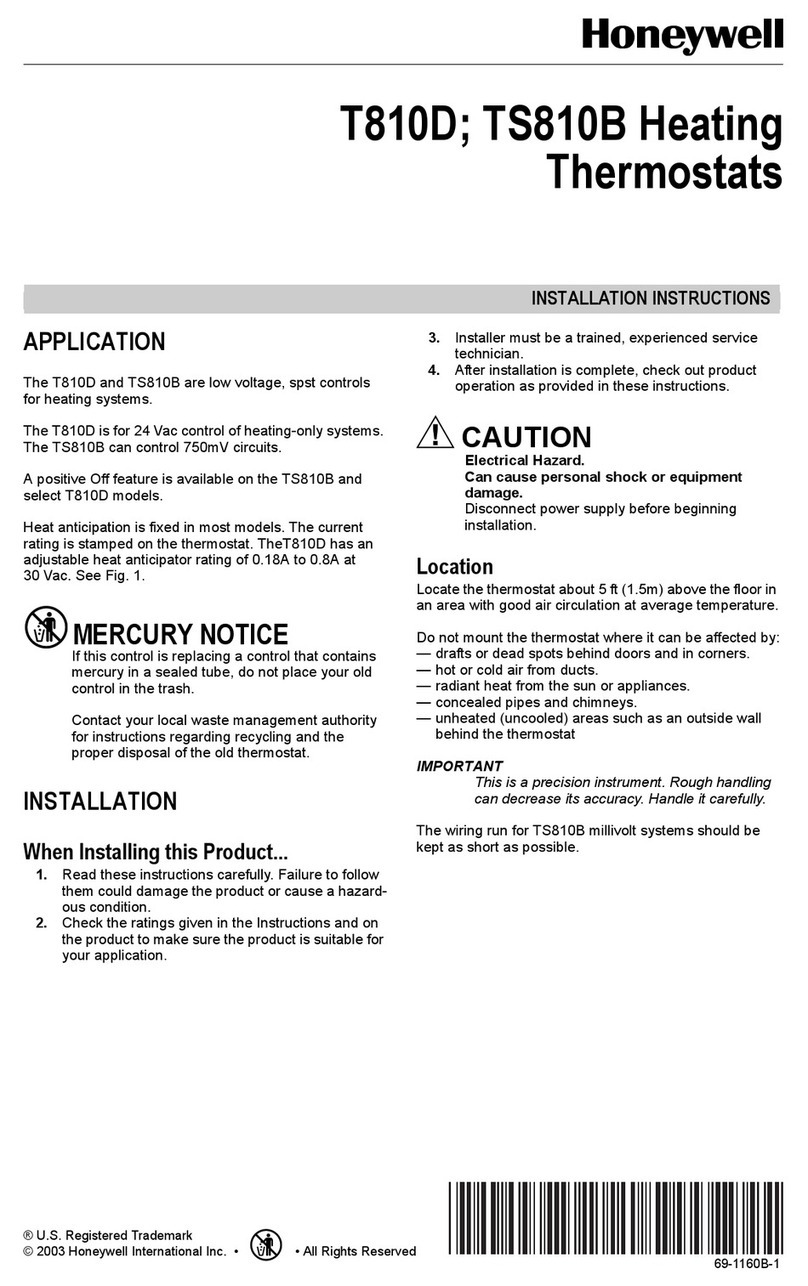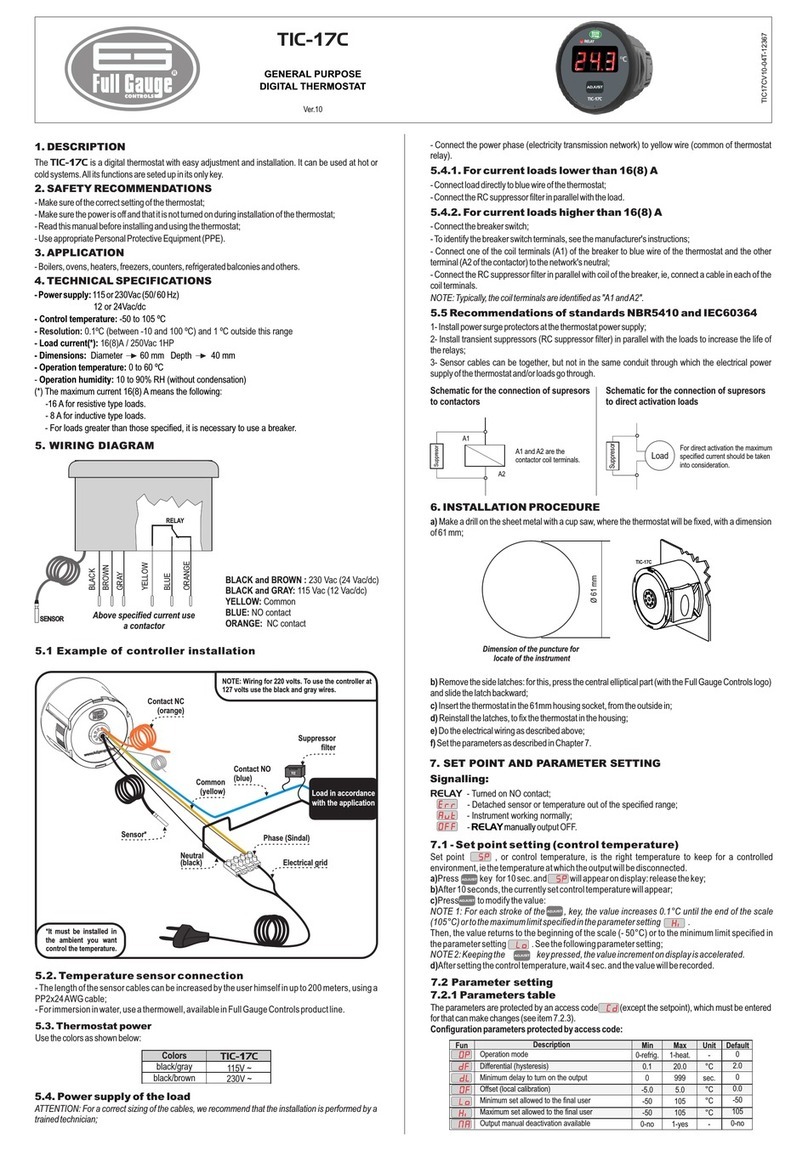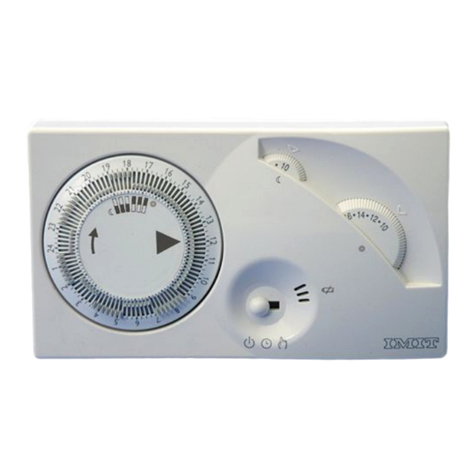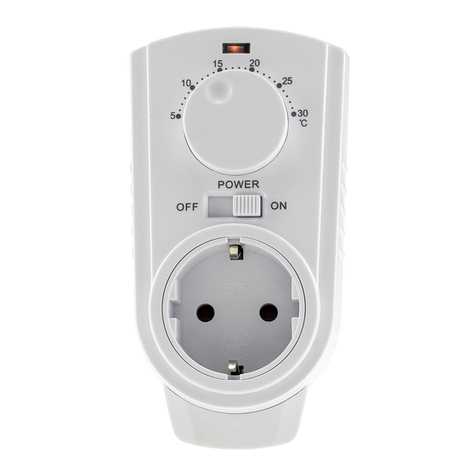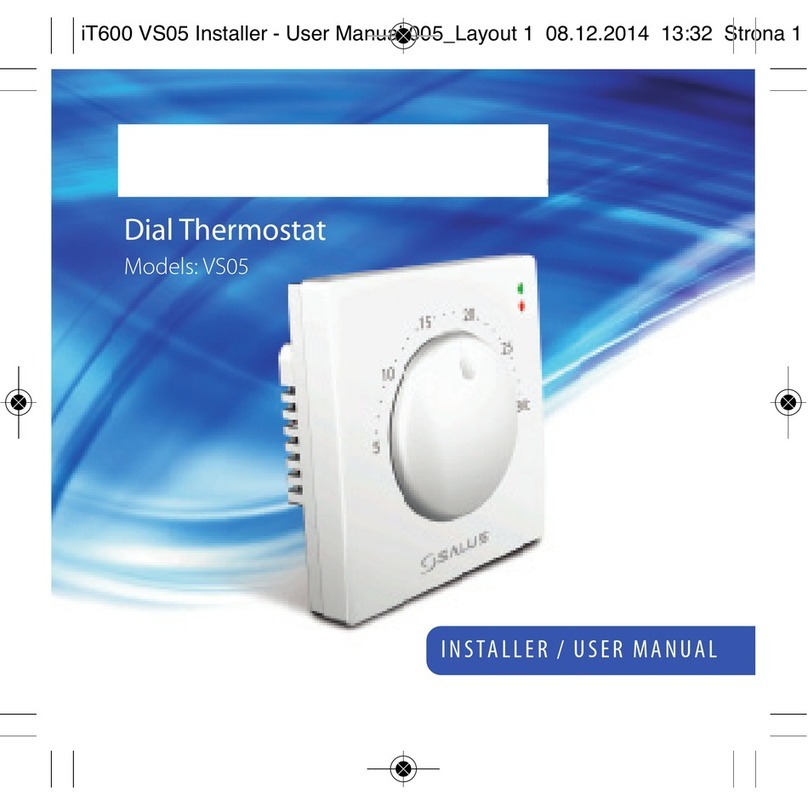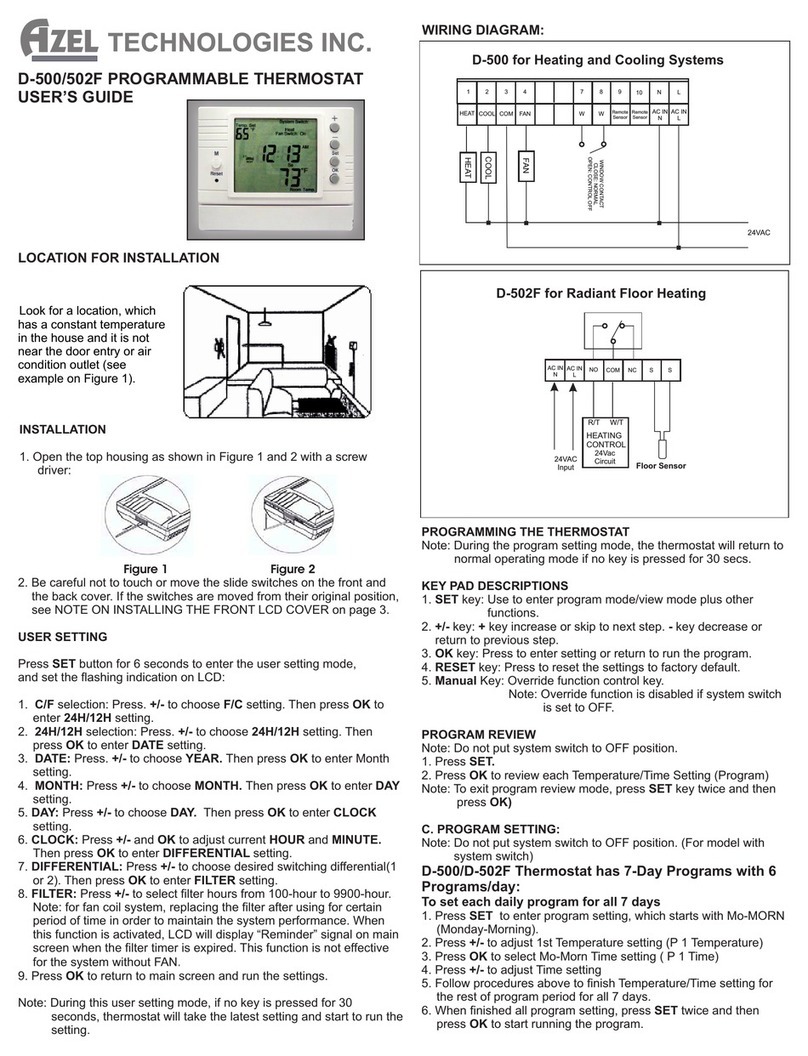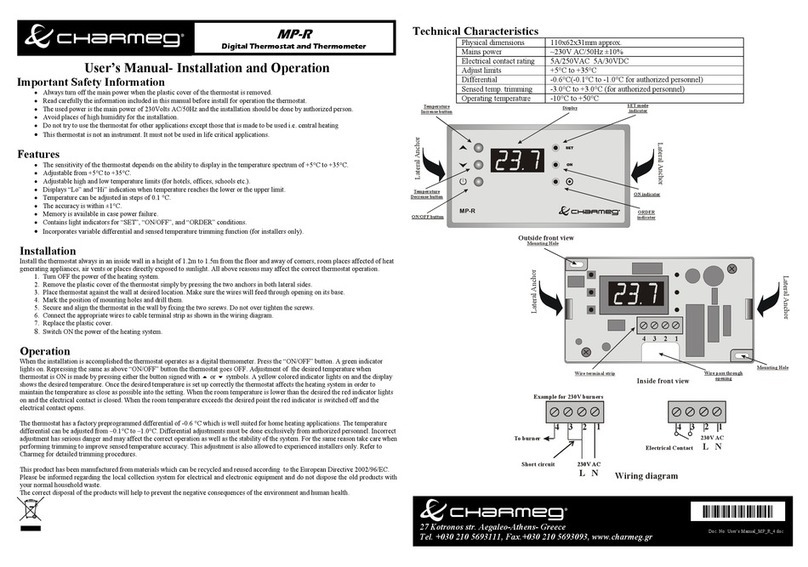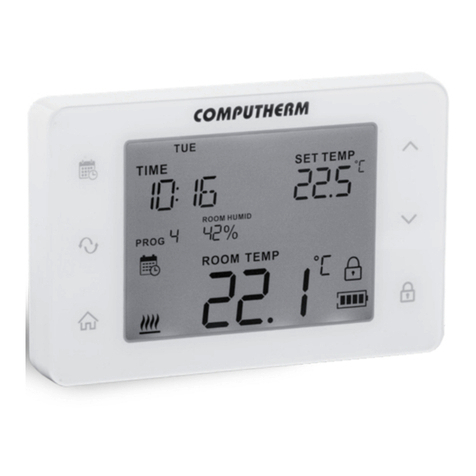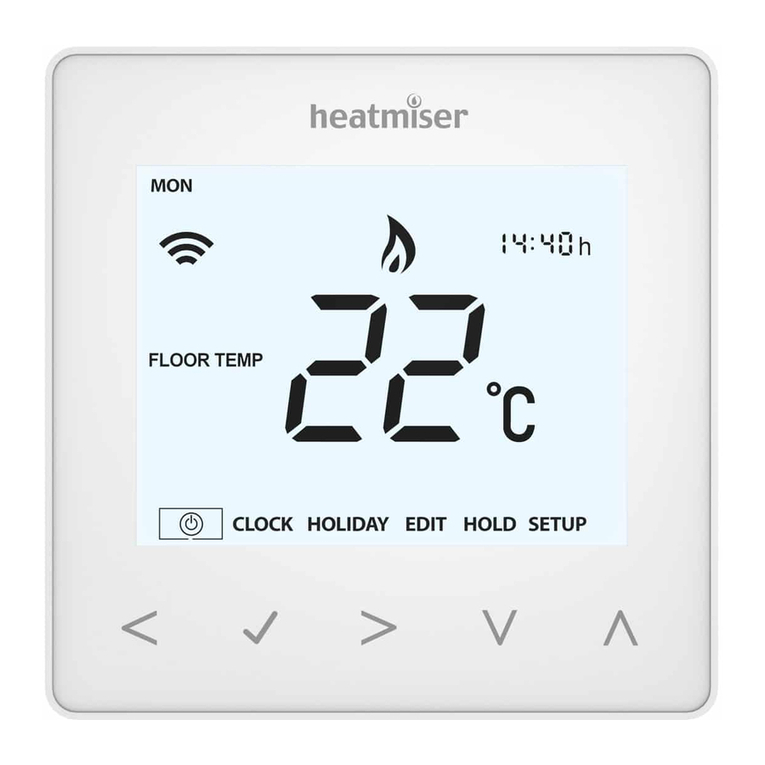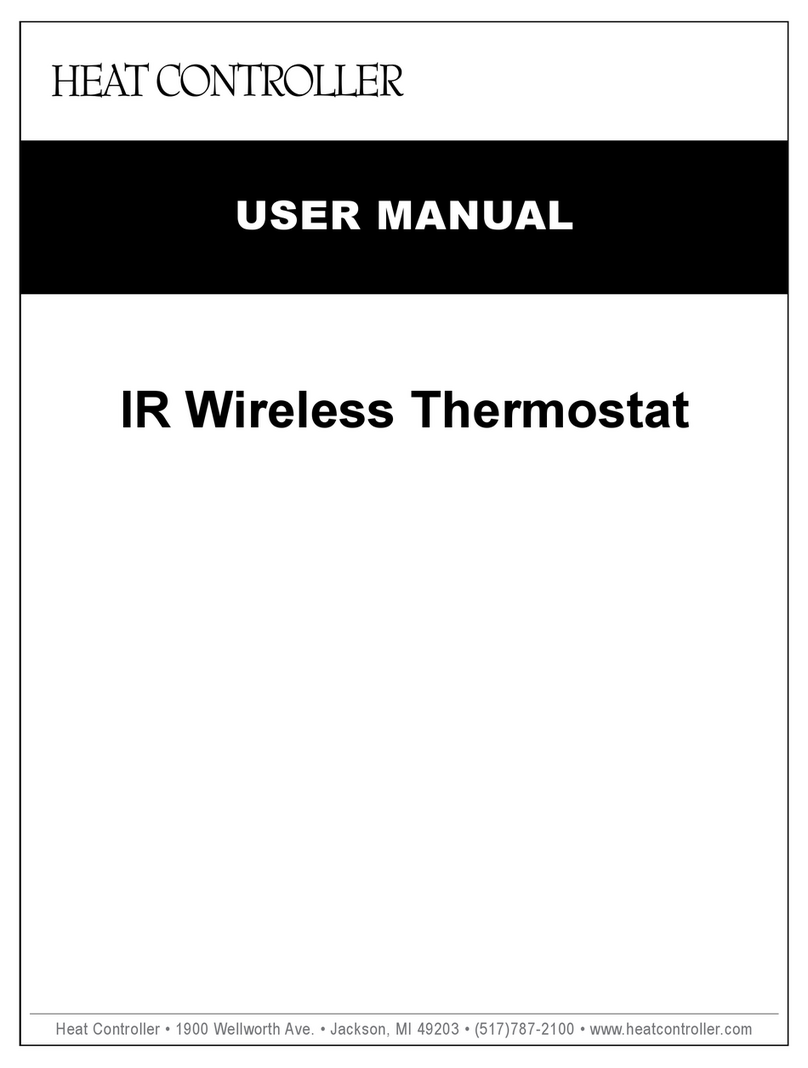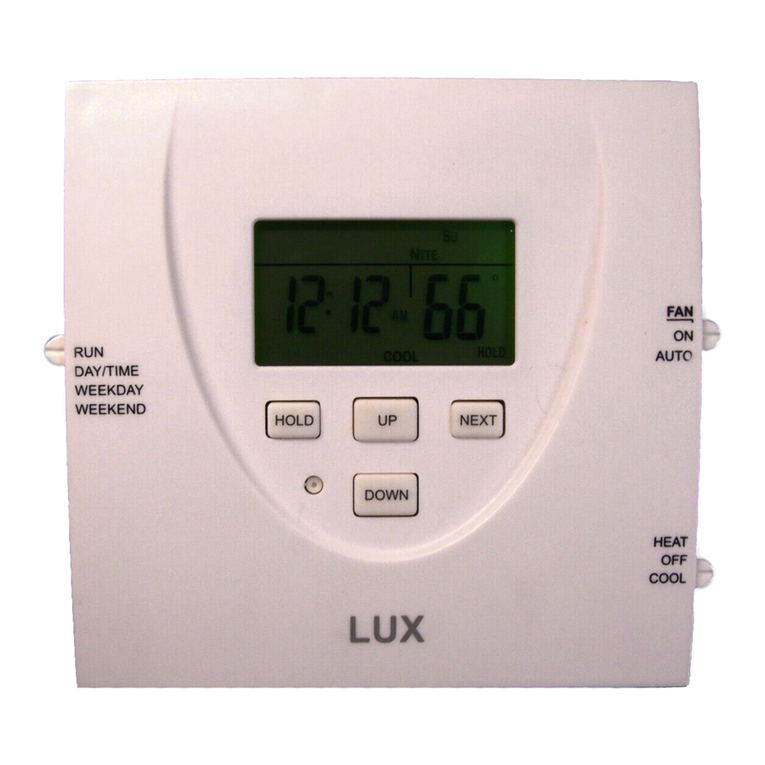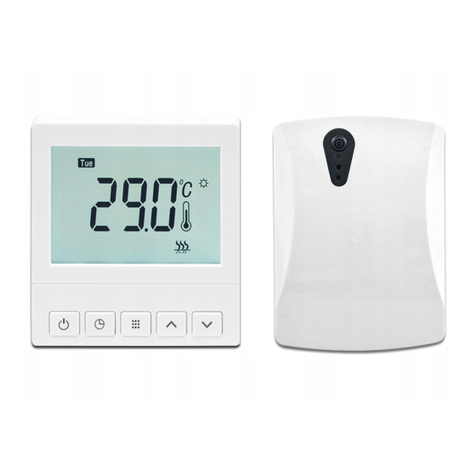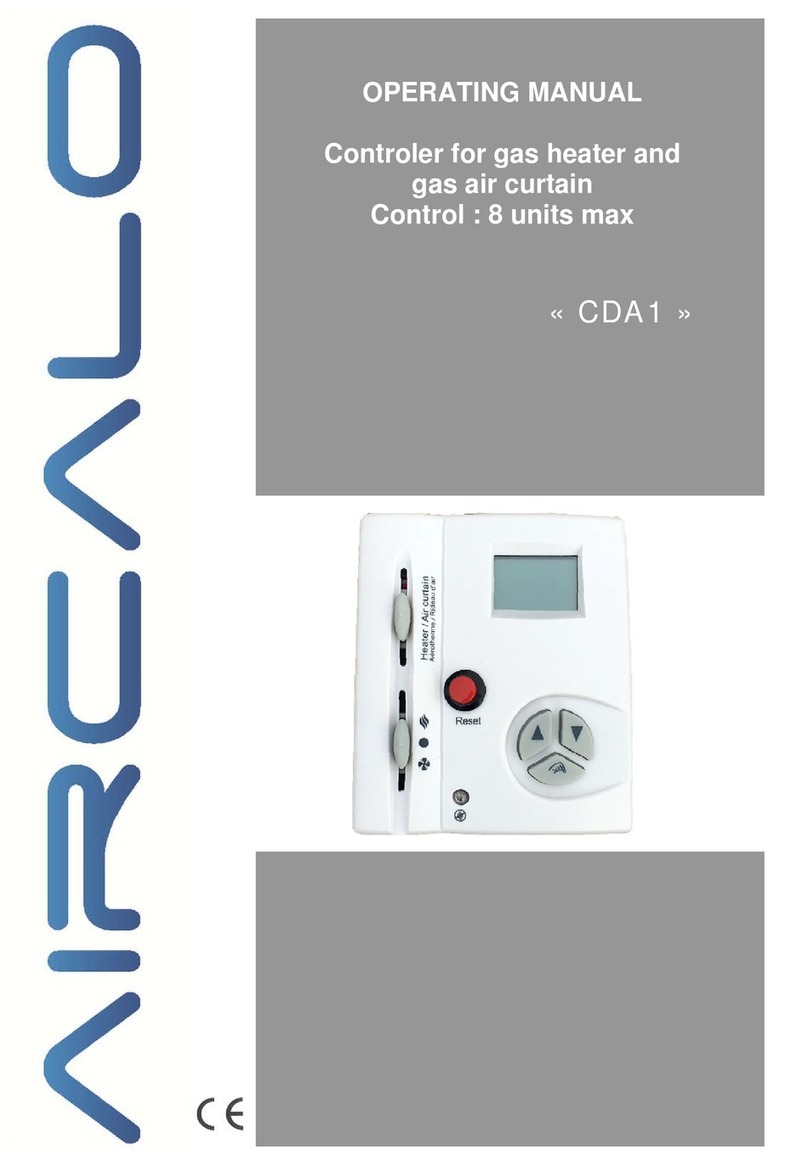
T7351 COMMERCIAL PROGRAMMABLE THERMOSTAT
9 62-0258
Get Factory Schedule (Info/Clear)
Performing this operation reverts the schedules to the
factory defaults:
1. Press both Info and Clear Start Time.
2. The display gives the option to revert to FAC SCH.
a. To restore the factory schedule, press up !or
down "until the display indicates YES.
b. To cancel this option, ensure display indicates
NO.
3. Press Run Schedule.
Test Mode (Occupied/Not Occupied/Schedule
Day)
CAUTION
Possible Equipment Damage.
Equipment damage can result if compressor is
cycled too quickly.
The minimum off time for compressors is
bypassed during Test Mode. Equipment damage
can occur if the compressor is cycled too quickly.
Use the Test Mode to check the thermostat configurations
and operation. To start the system test:
1. Press Schedule Day, Occupied and Not Occupied
simultaneously.
2. The display gives the option to TEST.
a. To enter test mode, press up !or down "until
the display indicates IN TEST.
b. To cancel this option, ensure display indicates
NO TEST.
3. Press Run Schedule.
NOTES:
— To verify whether or not the system test is still
active, repeat the above process.
— The system test times out after ten minutes
with no key pressed.
Save User Schedule (Info/Copy)
Performing this operation saves the current schedule
(including holidays) to memory, overwriting the old saved
schedule:
1. Press both Info and Copy.
2. The display gives the option to revert to SAV SHD.
a. To save the current schedule, press up !or
down "until the display indicates YES.
b. To cancel this option, ensure display indicates
NO.
3. Press Run Schedule.
Get User Schedule (Info/Run)
Getting the user schedule restores the schedule
(including holidays) from saved memory, overwriting the
schedule currently in use:
1. Press both Run Schedule and Info.
2. The display gives the option to GET SHD.
a. To retrieve the saved schedule, press up !or
down "until the display indicates YES.
b. To cancel this option, ensure display indicates
NO.
3. Press Run Schedule
DEHUMIDIFICATION
There are five methods through which the T7351 can
control for dehumidification. Three of them modify the
control algorithm, thus providing limited dehumidification
through cooling. The other two use the auxiliary output to
control another device.
NOTE: The dehumidification high limit can be set within
the range of 10 to 90 percent relative humidity.
Control Through Cooling
Configure using some combination of the following:
— Minimum On.
— Reheat.
— Reset.
NOTES:
— These methods operate only during cooling.
— Selecting both Reheat and Reset options can
cause frequent setpoint adjustments. This
selection is not recommended.
Min. ON Time
Dehumidifies by increasing the compressor minimum on
time (normally 3 minutes) by a programmable amount.
This is useful with oversized systems in that it forces the
coils to cool to a point where dehumidification can occur.
NOTES:
— Can force wider temperature swings by cool-
ing when setpoint control does not require it.
— The minimum on time can be set within the
range of 5 to 15 minutes.
— Hysteresis and a minimum timer are used to
ensure this behavior does not change with
every equipment cycle.
Reheat
Dehumidifies by operating cooling during typical off time.
The T7351 maintains the proper setpoint by running the
heat at the same time.
IMPORTANT
At times during Reheat dehumidification, the
T7351 operates heating and the cooling simulta-
neously. This is normal.
NOTES:
— The heat stage never energizes during
Reheat if more than one cool stage is on.
— Reheat mode cannot occur during heating.
Reset Temp SetPt
The room temperature set point resets to a specified
number of degrees below the actual set point when room
relative humidity (RH) rises above humidity high limit set
point.
Though this may not technically reduce relative humidity
in the room, it reduces the dew point to provide the
customer with a sense of comfort due to a lower
temperature setting in the room.
As long as RH stays above humidity high limit set point,
this set point is maintained.
NOTE: Hysteresis and a minimum timer prevent the set
point from short interval alternation (between
standard and reset set points).
